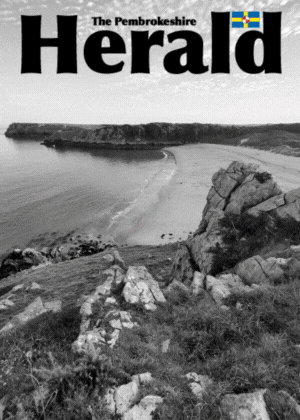Community
How do we know that man went to the Moon? The Herald explains
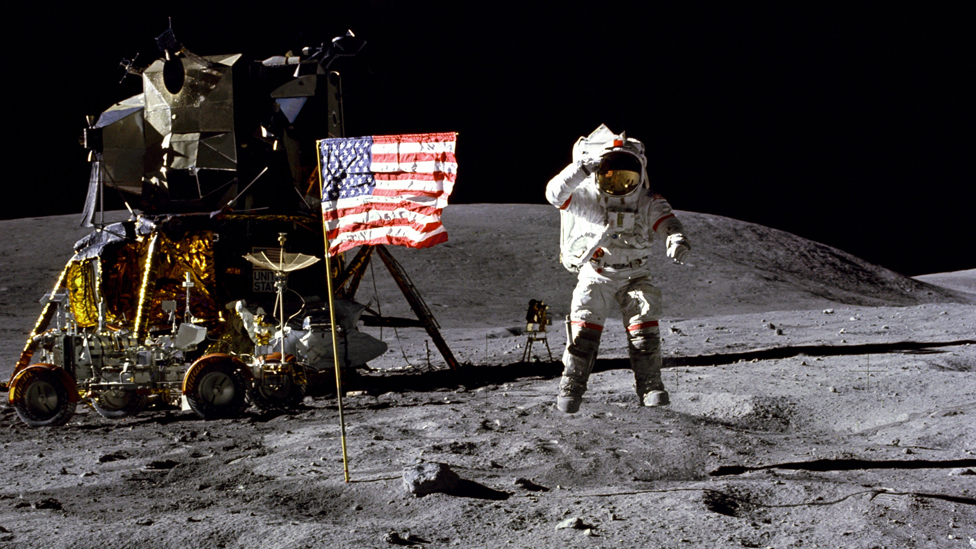
EVERY single argument claiming that NASA faked the Moon landings has been discredited. But even today, 50 years later, people discuss conspiracy claims online, on television programmes and around the dinner table.
Herald moon fact: With a powerful amateur telescope, you can see the Apollo landing sites and, if you look at the photos from the Lunar Reconnaissance Orbiter, you can spot the remnants of the Apollo missions yourself.

Were the Moon landings faked?
If you find yourself in a debate questioning whether humankind first stepped on the Moon on 20 July 1969, the chances are that you are woefully underprepared. Most people take it as gospel that the US government, NASA, the 12 astronauts in total who have walked on the Moon, and the 400,000 people involved in the Apollo programme would have neither the will nor the way to fake one of humanity’s greatest ever achievements.
But there are those who think the landings were a hoax. They claim the US government faked Apollo 11 and later missions either to deal a crucial blow to the USSR in the Space Race, or to boost NASA funding, or to divert attention away from the Vietnam War. The argument for any of these viewpoints rests on finding evidence that the landings were faked.
And more often than not, people point out peculiarities in specific images or videos to deal the critical blow. If someone uses these oddities as evidence, what do you say? Here are the most common arguments that support this view, and why each of them is wrong.
Evidence of the moon landings include items left there, reflectors installed on the surface, and lunar rocks brought back to Earth.
Photographic evidence
One of the most popular conspiracy arguments is that there are never any stars in Apollo photos. Free from Earth’s light pollution and hazy atmosphere, you would expect to see thousands of stars in all the astronauts’ images. Unfortunately, this argument rests on the photos being snapped during the lunar night. All manned missions to the Moon took place in sunny daytime. This meant starlight lost the battle against the very bright surface of the Moon, too dim to show up in photos.
Another common argument is that the crosshairs that appear in many Apollo images sometimes appear to be behind objects in the photos. If the images were real, this would be impossible, suggesting someone painted them on. But testing here on Earth has shown that the brightly lit objects make the crosshairs appear fainter. When these images are copied or scanned some of this detail is lost completely, giving the effect that the crosshair is behind the object in certain shots.
Others point to an oddity in a photo of a Moon rock taken during the Apollo 16 mission. There appears to be a ‘C’ written on it, like a lettered movie prop. Again, analysing the original photo there is no anomaly – the ‘C’ isn’t there. Most likely it was a piece of hair or thread introduced during copying.
A more subtle argument that the landings were faked is based on various misunderstandings of NASA equipment and lunar physics. A well-known example is the American flag that Neil Armstrong and Buzz Aldrin placed on the Moon. It appears to flutter in the wind in some photos. How could this happen when the Moon has no wind?
In fact, it isn’t fluttering at all. A horizontal rod at the top of the pole holds the flag unfurled. This makes it look like the wind is stopping it from hanging down. And there is a fluttering effect because the weak gravity on the Moon is not strong enough to uncrumple the flag. After a little waving while the astronauts planted the flags into the Moon’s surface, they have remained still ever since.

Fried by radiation
Perhaps the most convincing argument that the landings were faked has to do with something called the Van Allen belts. These are two giant doughnut-shaped belts surrounding the Earth. They are made of highly energetic charged particles from the solar wind. Some people believe humans couldn’t have passed through these belts without being exposed to lethal doses of radiation.
This was a genuine concern before the Apollo missions. And it is the reason scientists behind Apollo 11 made sure they protected the astronauts as best they could. They insulated the spacecraft from radiation with an aluminium shell. And they chose a trajectory from the Earth to the Moon which minimised the amount of time spent in the Van Allen belts.
Readings from the nine Apollo missions that reached the Moon showed the astronauts’ average radiation exposure was 0.46 radiation-absorbed dose (rad). This proved NASA was right to shield the astronauts from radiation. Though it’s less than that experienced by some nuclear energy workers, 0.46 rad is around 10 times more than the radiation exposure of medical professionals who routinely work with x-ray and radiotherapy machines.
Proof we walked on the Moon
Of course, until we return to the Moon there will always be anomalies and oddities in the records that can spark new claims that the Moon landings were faked. But it is the sheer size and variety of this record that proves every one of these claims to be false.
From the Apollo Moon missions, there are 8,400 publicly available photos, thousands of hours of video footage, a mountain of scientific data, and full transcripts and audio recordings of all air-to-ground conversations. We even have 382 kilograms of Moon rock that Apollo astronauts brought back to Earth. These rocks have been independently verified as lunar by laboratories around the world, ruling out a US conspiracy.
If this is not enough to convince the most hardened sceptic, NASA’s Lunar Reconnaissance Orbiter (LRO) might sway them. Today, LRO takes high-resolution pictures of the lunar surface from a low orbit. During its mission, it has captured the landing sites and the abandoned descent modules and rovers from the Apollo missions. And its resolution is so good it has picked up the dark squiggly paths that the astronauts’ footprints made. Spacecraft from China, India and Japan have also spotted these landing sites, providing further independent verification of the landings.
A final nail in the coffin of the Moon hoax theories is a simple instrument installed 50 years ago by Apollo 11. During their day on the Moon, Armstrong and Aldrin planted a lunar laser ranging retroreflector array on the surface. It’s still operational today and allows us to reflect lasers off of it and measure the distance to the Moon down to the centimetre. We simply couldn’t do this if we hadn’t visited the Moon.
Community
Senedd unanimously backs sign language bill

PLANS to make Wales the best place in the UK for British Sign Language (BSL) users moved a significant step closer to becoming law with the Senedd’s unanimous support.
If ultimately passed, the BSL bill – introduced by the Conservatives’ Mark Isherwood – would end Wales’ status as the only UK nation without specific sign language protections.
Leading a debate on Wednesday December 17, Mr Isherwood said the Senedd supporting the bill’s general principles was a “huge step ahead” for the “vital” legislation.
Mr Isherwood, a disability rights campaigner for decades, explained his backbench bill would introduce legal requirements to promote and facilitate the use of BSL in Wales.
He said the bill, if passed, would be the most progressive piece of BSL legislation anywhere in the UK, recognising BSL is a language in its own right, not a communication support need.

He highlighted that the bill would establish a BSL adviser role, the first statutory post of its kind in the UK, describing its importance as something that “cannot be overstated”.
Mr Isherwood, who chairs cross-party groups on disability and deaf issues, told the Senedd: “This isn’t just my bill. This is the bill of the BSL community. Let’s make this happen together and be proud of it together on behalf of deaf people across Wales.”
Jenny Rathbone, the Labour chair of the Senedd’s equality committee, was convinced of the “overdue” need for legislation to give more standing to British Sign Language.
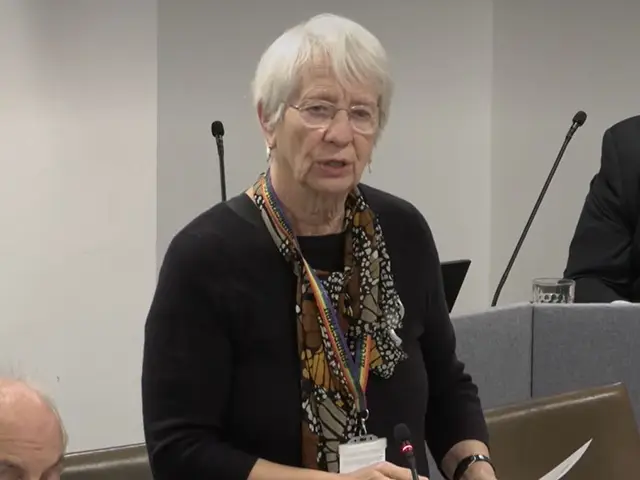
Ms Rathbone said the committee heard the biggest barrier “by some margin” was the availability of interpreters and the sustainability of the workforce.
She quoted a signer who told the committee: “The bill would make us feel respected and valued. But without proper funding, planning and deaf-led leadership, it won’t go far enough.”
Sioned Williams, Plaid Cymru’s shadow social justice secretary, told Senedd members: “Language is a part of our identity, our culture and our personal dignity.
“When someone cannot use their language, they are excluded from education, health care, employment and public life – and that is not acceptable in today’s Wales.”

Ms Williams warned that if the legislation fails to deliver real change, the deaf community would be left “angry, disappointed and very, very disheartened”.
She expressed concern that the bill does not legally require the BSL adviser to be a deaf person, arguing it is “not appropriate, possible or efficient” for non-signers to lead the way.
Mr Isherwood defended the decision not to require that the adviser must be deaf, warning a successful legal challenge to a single such provision could cause the entire bill to fail.
Welsh Liberal Democrat leader Jane Dodds warned of an immediate workforce crisis, with only 54 registered sign language interpreters in Wales as of July.
With many now approaching the end of their working lives, she said: “We cannot – we must not – allow this bill to fail because we didn’t have the foresight to address this crisis now.”
Support for the bill stretched across the political spectrum, with Reform UK’s Laura Anne Jones similarly welcoming the “long-overdue” and “vital” legislation.
Jane Hutt, Wales’ social justice secretary, confirmed the Welsh Government’s financial backing, committing £214,300 for the bill’s first year of implementation in 2026/27.
If it clears the final hurdles, Mr Isherwood’s proposal will be the first backbench bill to enter the statute book in about a decade following the Nurse Staffing Levels (Wales) Act 2016.
Community
‘Nowhere I can play’: Disabled children excluded from Welsh parks

NEARLY four in ten disabled children in Wales “never or hardly ever” play outside due to a “heartbreaking” lack of accessible parks, politicians have warned.
Rhys ab Owen, an independent, described the situation as “disgraceful” as he cited a Play Wales report showing 37% of disabled children are effectively shut out of playgrounds.
Leading a debate in the Senedd on Wednesday December 17, he read the testimony of a ten-year-old boy from Blaenau Gwent who said: “Nowhere disabled friendly – parks haven’t got disabled friendly equipment, so I can’t play.”
Mr ab Owen warned: “There shouldn’t be any discrimination… disabled children do face much greater problems in terms of park maintenance, and with accessibility and inclusion.”
He shared the experience of a 13-year-old girl from Newport who told researchers: “There’s nowhere I can play or hang out safely by myself as I use a frame to help me walk.”
The former barrister warned budget cuts were leading to a managed decline in standards, quoting a 13-year-old from Caerphilly who said: “Due to anti-social behaviour our equipment gets broken, burnt and vandalised and is then not replaced.”
The Conservatives’ Natasha Asghar was stunned by the scale of the crisis and revealed that only 11% of playgrounds in Wales are rated “green”, meaning they are fully accessible. By contrast, almost half are rated “red” for poor accessibility.

Listing the barriers families face, Ms Asghar highlighted that 30% of sites lack accessible paths and nearly one in five have gates too narrow for wheelchairs. “Those are just two of the barriers preventing disabled children from accessing play,” she said.
Jane Dodds, the leader of the Liberal Democrats in Wales, argued the shocking statistics should be a wake-up call for Senedd politicians.
“To hear that 37% of disabled children in Wales say they never or hardly ever play outside should be a figure to stop us all in our tracks,” she said.

Meanwhile, Mike Hedges pointed out that Wales became the first country in the world to put a duty on councils to secure “sufficient play opportunities” for children in 2010.
And Julie Morgan, a fellow Labour backbencher, celebrated Cardiff becoming the UK’s first Unicef-accredited child-friendly city in 2023.
Dawn Bowden, the minister for children, pointed to £5m to improve playgrounds this year but she too was “disappointed” by play satisfaction figures falling from 84% to 71% since 2019.

She said the Welsh Government has provided a “toolkit” to Wales’ 22 councils, “ensuring a holistic outcome-focused approach” to inclusive and accessible play.
The cross-party motion, which called for play to be protected from cuts – as well as improved access for disabled children – was agreed unanimously but does not bind ministers.
Climate
Pembroke tidal flood defence work to continue to January
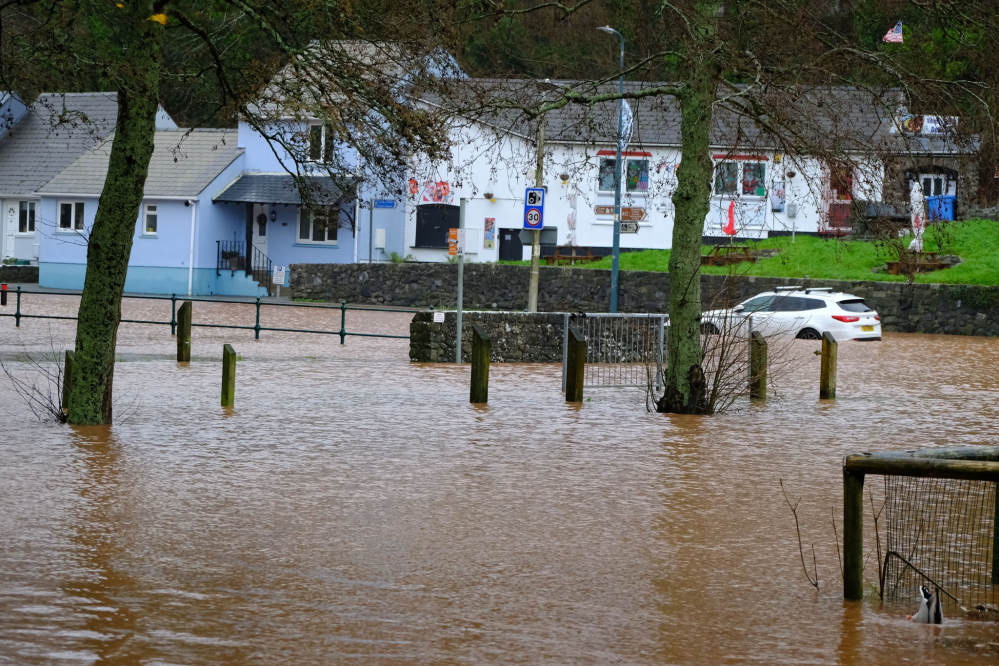
SIGNIFICANT issues with a part of Pembroke’s tidal barrage are not expected to be fully fixed before late January, councillors heard.
Pembroke councillors Aaron Carey and Jonathan Grimes submitted an urgent question heard at the December meeting of Pembrokeshire County Council, which said: “In light of the repeated flooding events across the county – including the recent overflow at Castle Pond and the acknowledgement by your own Coastal, Rivers & Drainage Team that the barrage tipping gate remains inoperable until mid-January can you explain what assessment has been made of the adequacy of our tidal outfall infrastructure in the face of current and projected future storm surges and sea-level rise?
“If no such assessment has yet been undertaken, will you commit now to commissioning an immediate structural and risk-capacity audit, with a report to full council within three months, and with proposals for funding any remedial works required — to avoid recurring damage and disruption to residents, highways, and public amenities?”
Responding to the urgent question, Cabinet Member for Residents Services Cllr Rhys Sinnett said a significant assessment of the Pembroke Tidal Barrage had already been undertaken over the past two years, with regular inspections.
He said “a comprehensive package of works” began in September which were due to be completed before Christmas but said there had been “significant issues” with the tipping gate hydraulic ram, with a significant overhaul now taking place, with reinstatement expected by late January.
He told members additional mitigation measures were now in place and, once works are completed, enhanced works will provide improved resilience and “long-term reliability,” with further reports due to come to Cabinet.
Cllr Carey and Cllr Grimes had also submitted a notice of motion saying: “That this council notes with concern the repeated and increasingly severe flooding experienced in our coastal, estuarial and river-fringe communities over recent weeks — in particular the flooding events affecting the Commons/Castle Pond area.
“That the council further notes that, according to correspondence from the Coastal, Rivers & Drainage Team Manager, the tipping gate at the barrage remains out of operation until mid-January due to mechanical issues; meanwhile high tide, heavy rain, wind-driven tidal surges and overspill at the sluice have combined to overwhelm the drainage/outfall infrastructure.
“That we recognise the current maintenance schedule (delayed ‘til after the summer season) and the justification given — but further that such planning failed to foresee the likelihood of severe winter storm and surge events, which climate change makes more frequent and more intense.
“That this council therefore calls on the Cabinet to commission an urgent review of:
- The adequacy of the current drainage/outfall and tidal-sluice infrastructure (barrage tipping gate, sluice/sluice-valve, flap valve, outfall capacity) for current and projected climate/tide conditions.
- The maintenance scheduling policy for coastal and estuarial flood-risk assets, with a view to ensuring critical maintenance is completed before winter high-tide / storm-surge season, rather than — as at present — being delayed until after summer for ‘recreational / biodiversity’ reasons.
“That, pending the outcome of the review, the council should allocate appropriate emergency capital funding to remediate the barrages / sluices / outfalls at risk of failure or blockage — to safeguard residents, properties, highways and public amenities from further flooding.
“That, further, this council resolves to publish a public flood-resilience plan for the county, identifying all coastal and river-fringe ‘hotspots,’ maintenance schedules, responsible teams, and a transparent timeline for upgrades or remedial works — so residents have clarity and confidence in flood prevention measures.”
The notice of motion itself will be considered by the council’s Cabinet at a later date.
-

 Crime1 day ago
Crime1 day agoMilford Haven man jailed after drunken attack on partner and police officers
-

 News4 days ago
News4 days agoDyfed-Powys Police launch major investigation after triple fatal crash
-

 Crime1 day ago
Crime1 day agoTeenager charged following rape allegation at Saundersfoot nightclub
-
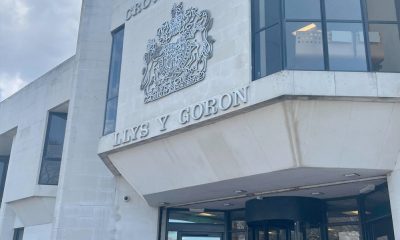
 Crime2 days ago
Crime2 days agoMan charged with months of coercive control and assaults
-

 Crime3 days ago
Crime3 days agoMan sent to Crown Court over historic indecent assault allegations
-

 Crime5 days ago
Crime5 days agoMan spared jail after baseball bat incident in Milford Haven
-

 Crime3 days ago
Crime3 days agoMilford Haven man admits multiple offences after A477 incident
-

 Crime2 days ago
Crime2 days agoWoman ‘terrified in own home’ after ex breaches court order










